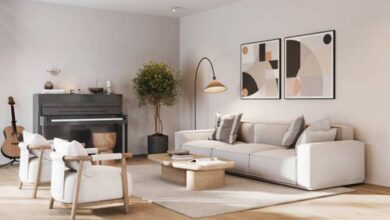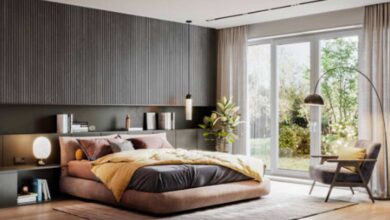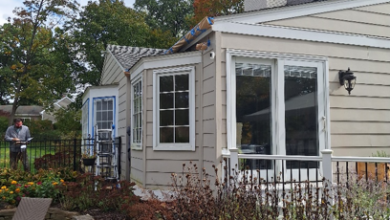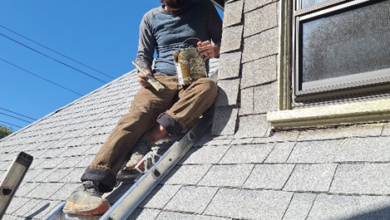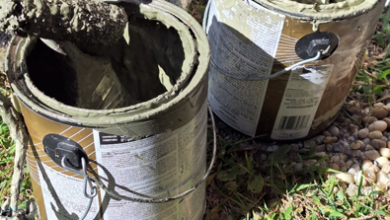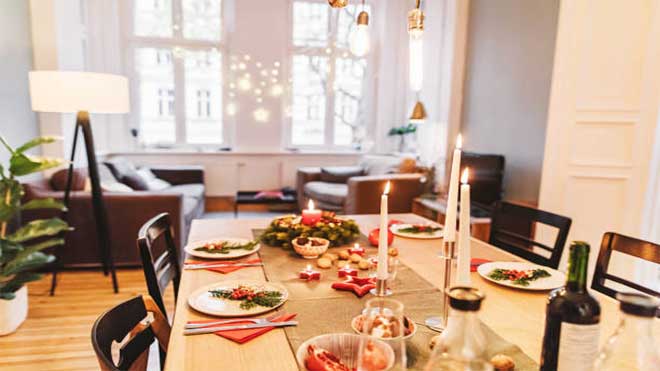
Table runners are a simple and effective method to decorate a standard table. They are available in many materials, sizes, and colors. Although you can follow rules for utilizing table runners, you can also be creative. This article is packed with basic information related to table runners.
From the traditional guidelines for table runners, a guide for choosing the right size, insight on traditional sizes, ways of utilizing a table runner, famous fabrics and textures for table runners, and lastly, how to classify table runner designs in Pakistan in formal and informal occasions, this article explains it all. It’s gonna be a long read but you will be equipped with the table runner knowledge!
Traditional Rules of Table Runners
Usually, a table runner should hang on the sides of the table. This technique is aesthetic as compared to a runner which ends where the table ends or is a bit shorter than the table. Make sure that the amount of hang is equal on either side.
A conventional tablecloth can hang from 6 to 12 inches. If you utilize both runner and tablecloth, the drop should be equal for both.
The thickness of the table runner should be around ⅓ the width of the table in the lengthwise direction of the table. If the table runner is placed across the width of the table, it should be ¼ the width of the table. If your table runner is shorter than the table, it should be shorter to utilize it under the centerpiece.
See Also: Natural & healthy living with solid wood furniture
How to Choose the Best Size
You have to calculate the length and width of your table before doing anything else. Afterward, add a minimum of 12 inches and 24 inches maximum in the measurements.
This will make you aware of the type and sizes of table runners you should buy for your table. Remember to take into account the width of the table and select a table runner having a width of ⅓ of that measurement.
Traditional Sizes
Many table runners are available in the width measurements of 10 inches, 12 inches, 13 inches, 14 inches, or 15 inches along with the standard length measurements of 54 inches, 72 inches, 90 inches, and 108 inches. If your dining table is 84 inches in length and 42 inches in width, you need a table runner the size 14 inches by 108 inches.
Remember that there are no actual guidelines for utilizing table runners. Therefore, you should not fret if the thickness of the table runner you are fond of is not completely ⅓ of the width of the table. This length can also be a bit shorter or longer than the advised measurements. But as long as it looks nice, who cares?
However, try to remember the size instructions when decorating the room for serious formal events such as weddings. In case the standard sizes do not work with your particular table dimensions, you should probably order a customized table runner or even make one at home yourself by following simple DIY tips!
Ways to Use Table Runners
Table runners can be utilized in various styles and on many kinds of furniture. Apart from the dining table, they can be placed on the following:
- End table
- Hall table
- Patio table
- Sofa table
- Coffee table
- Bedside table
Different shapes of tables can also be paired with table runners such as:
- Square tables
- Round tables
- Rectangular tables
- Oval tables
1. Table Runner Placed Lengthwise
The most frequent method of using a table runner is to put it in the center of the table and the lengthwise direction. This offers an ideal path to place different serving dishes or centerpieces on the table.
The runner can also be utilized to shield the table’s surface from heat, candle wax, debris, food dropping, moisture, and more caused by decoration or centerpieces.
2. Table Runner Placed Across the Table
This position requires shorter and narrower table runners located across the table in front of each chair. They serve the purpose of placemats and can be utilized along with a lengthwise table runner or even without one. Table runners located across extra lengthy tables can be utilized to divide each person’s area.
3. Utilizing Table Runners with Other Table Linens
Placemats can be utilized along with other table runners in the same patterns, texture, fabric, or color that sync with each other. The choice of whether or not a tablecloth should be added depends on the setting is formal. It can also depend on the kind of table.
If the tablecloth includes decorative details such as inlaid title or not. The table runner should not be similar to the tablecloth or even belong to the same color otherwise it can’t stand out.
4. Table Runner Utilized on Other Furniture
Short table runners can be hung over an end table or a nightstand to add a bit of color and texture. It can also be utilized to accent other kinds of furniture such as a dresser, buffet, vanity table, credenza, or hutch.
If your furniture is made of glass, it is wise to protect it with a table runner. Coffee tables, glass display cases, and consoles are a few types of furniture that can use a table runner.
Fabrics and Textures
Table runners are made of many different fabrics. The selection of fabric should be compatible with the type of table and the room decoration. The following factors should be considered while buying a table runner:
- Texture
- Color
- Pattern
These three aspects should complement or contrast perfectly with the table underneath, the aesthetics of the room, and the things placed on top. For instance, it would look tacky if you pair a silk table runner with a Chinese calligraphy design on an ancient dining table in a lodge-style room and log home. This type of runner can only look charming on an Asian lacquered rosewood dining table.
Formal and Informal
Fabrics having smooth and glossy textures such as polyester, silk, organza, and satin are the most compatible with similar textures. For instance, highly lacquered wood, formal linen tablecloth, and glass. These fabrics are excellent for formal occasions such as ceremonies, festivities, weddings, or parties.
Fabrics having natural, thick, or coarse textures such as twill, bamboo, cotton, grass cloth or cotton blends pair the best with stone, wood, ceramic, and metal tilted tables. These fabrics are utilized for casual and informal usage.


